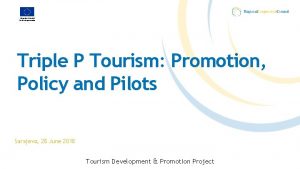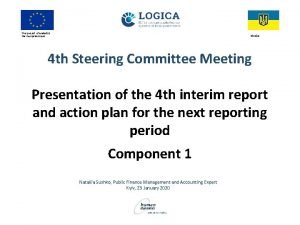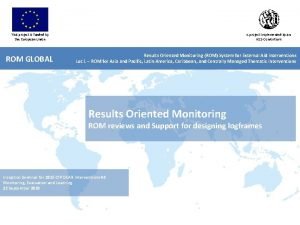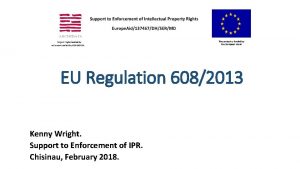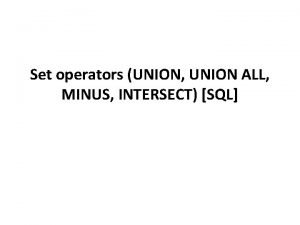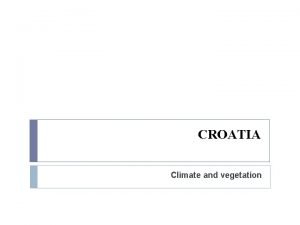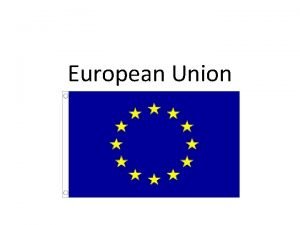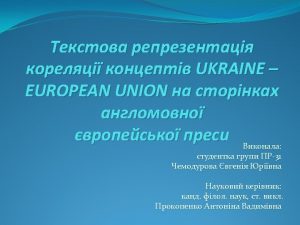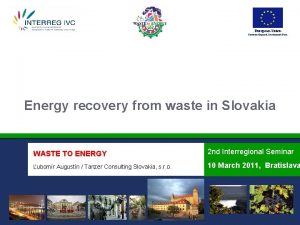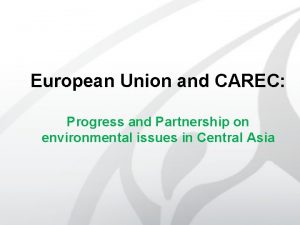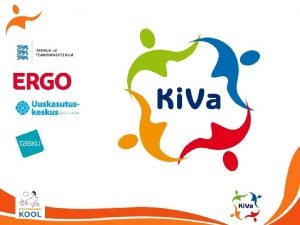Progress Programm of European Union Croatia Project Partnership












- Slides: 12

Progress Programm of European Union Croatia: Project Partnership for social inclusion September 16, 2009. http: //www. socijalna-ukljucenost. net Predrag Bejaković The Guide for Social Impact Analysis Project coordinator The Institute for Public Finance, Zagreb Smičiklasova 21, Zagreb Phone: +385 1 4886 444 Fax: +385 1 4819 365 www. ijf. hr This programme is co-financed by Delegation od the European Commision in the Republic of Croatia Trg žrtava fašizma 6, Zagreb Phone: +385 1 4896 500 Fax: +385 1 4896 555 www. delhrv. ec. europa. eu The European Commission is an executive body of European Union. “European Union consists of 27 EU Member States determined to unite their knowledge, resources and destines. With mutual co-operation during 50 years they established an area of stabilily, democracy and sustainable development, keeping their cultural diversity, tolerance and personal freedom. European Union is devoted to sharing its achievements and its values with countries and people out of its own borders. ” 1 http: //ec. europa. eu/employment_social/spsi/poverty_social_exclusion_en. htm

The content of the presentation • What is about • General background • Analysis role in improvement of social picture • Some principles in implementation • Key areas 2

Reasons and importance of the Project • • • Significant number of Croatian citizens is in unfavourable social position because they do not have adequate access to existing public goods and services, and due to economic recession, increased unemployment and budget problems, one could expect further deterioration of the social picture. The aim is to improve the social picture through workshops, round tables, user’s guides and enhancement of public awareness on social exclusion. The situation can be improved with the realisation of the Analysis of social impact. 3

What is about? • The Social Impact Analysis (SIA) refers to the analysis of the distributional impact of policy reforms on the well-being or welfare of different stakeholder groups, with particular focus on the poor and vulnerable • The User’s Guide presents both economic and social analysis tools and methods. • Analysis may include the likely repercussions of extensions or reductions in the duration of unemployment benefits, increasing the amount or broadening the number of users of the maintenance allowance etc. 4

General background • Market forces alone can never be relied on to produce a fair or equitable society. • The state must be committed to the reduction of poverty and inequality, and in order to do so, it must maintain a transparent and equitable system of social protection that relies on a foundation of universal coverage and non-discrimination. • It is necessary to strengthen the social safety net through improved targeting and monitoring of social welfare programmes, empowering civil society in the provision of social services, decentralisation of some social services and better design of employment policy. . • A primary aim of policy must be to get people into work - or back into work. 5

Analysis role in improvement of social picture • It is an approach that intends to inform policy formulation and choice, rather than being any specific tool or method. • It draws on a host of different tools from many disciplines depending on what is appropriate for the particular issue. • SIA takes account of the intended and unintended consequences of various policies not only those with an explicit poverty reduction aim. • Its ambition is to improve policy formation as well as measures for impact evaluation of policy interventions on the well-being of different social groups, with a focus on poor and vulnerable people. 6

Main principles (I) A multi-dimensional and disaggregated view of poverty and asses the distributional impacts on various social groups. In order to provide a full view of these effects a combination of quantitative and qualitative data will be required. A range of social, economic, political and institutional approaches to analysis could be used. 7

Main principles (II) Country ownership - National actors should be involved in all discussions and should take the lead in identifying policy issues. Enable broad stakeholder engagement. Be able to foster transparency and accountability. Be pragmatic and appropriate to purpose. 8

Key areas (I) With all mentioned, SIA helps the project make better use of existing community assets. SIA addresses seven key areas: 1. What is being analyzed 2. What is the welfare measure being assessed 3. Whose welfare is being analyzed 9

Key areas (II) 4. How impacts are channelled 5. How do institutions affect outcomes 6. When do impacts materialize 7. What are the risks of an unexpected outcome 10

Elements of Good Social Impact Analysis 1. Asking the right questions 2. Identifying stakeholders 3. Contemplating enhancement and compensation measures 4. Assessing risks 5. Monitoring and evaluating impacts 6. Fostering policy debate and feeding back into policy choice 11

Thank you for your attention! All proposals, improvements and opinions are welcomed. Contact: Predrag Bejaković The Institute for Public Finance, Zagreb, Croatia Phone: +385 1 488 64 55, Fax: +385 1 48 19 365 e-mail: predrag@ijf. hr, www. ijf. hr 12
 Progress programm
Progress programm This project is funded by the european union
This project is funded by the european union This project is funded by the european union
This project is funded by the european union This project is funded by the european union
This project is funded by the european union This project is funded by the european union
This project is funded by the european union This project is funded by the european union
This project is funded by the european union This project is co-funded by the european union
This project is co-funded by the european union This project is funded by the european union
This project is funded by the european union Physical progress and financial progress
Physical progress and financial progress Cranfield school of management
Cranfield school of management Union union all intersect
Union union all intersect Croatia minimum wage
Croatia minimum wage Croatia vegetation
Croatia vegetation


